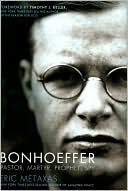Joan of Arc: Her Story
In an exquisite English translation from the bestselling French edition, Joan of Arc: Her Story now appears for American readers. From the French peasant girl who led an army to the icon burned at the stake, Joan has been a blank slate on which thousands have written. Pernoud and Clin clear away the myths so that modern readers can see Joan as she was and include a glossary of important individuals, historical events and interpretations of Joan through the ages. Joan of Arc: Her Story is the...
Search in google:
In a distinguished English translation, the bestselling French book now considered the standard biography of Joan published just in time for the upcoming film by Luc Besson. Le Monde Truly an examplary biography...this Joan of Arc makes you want to be there to witness it all!
\ \ Chapter One\ \ \ HER STORY BEGINS\ \ \ The city of Orléans, the bridge between northern and southern France, was sorely besieged by a large English force from October 12, 1428, to the following May. Its ruler, Duke Charles of Orleans (see Part II, Section 31), had been a prisoner in England since the Battle of Agincourt in 1415. The city's defense was commanded by his half-brother John, the Bastard of Orléans (later to be count of Dunois, II, 16). Over those seven months, reinforcements came sporadically to the aid of both the besieged French and the besieging English. Inconclusive skirmishing failed to mask the steady tipping of the balance in favor of the English. By March 1429, Orléans seemed ready to fall at the next serious push.\ Then, in early March, came the rumor that a maid from the kingdom's eastern frontier had ridden to meet the Dauphin Charles (II, I), promising to restore his kingdom to him by saving Orléans and by working other wonders. Joan of Arc enters the historical record; her story begins.\ \ \ "They say that a maid passed by the city of Gien, a maid who presented herself to the noble dauphin to raise the siege of Orleans and to lead the dauphin to Reims so that he might be anointed." This "they say" in February 1429 is the first appearance in the historical record of the woman we now call Joan of Arc.\ These lines were written by one of the principal characters in the opening scenes of Joan's drama, the man best situated to be informed about it: John theBastard, better known by his later title, the count of Dunois. His testimony from Joan's nullification trial continues: "Since I was the guardian of the city of Orléans, being lieutenant-general once the war began, I sent to the king's court the sire de Villars, who was seneschal of Beaucaire, and Jamet du Tillet, who later was bailiff of the Vermandois, for fuller information concerning this maiden."\ On the fate of Orléans hung that of the entire kingdom. Orléans was the key to the south of France. It was the key to Bourges, the stronghold of the dauphin Charles, known contemptuously to his opponents as "the king of Bourges." It was the key to Auxerre, where Burgundian troops were stationed, ready to take up arms in what might well be the final move to checkmate the dauphin. Past Bourges ran the road to Guyenne, where the English were at home, where they did not need to behave like conquerors, since Guyenne was the core of the fief of Aquitaine, the legacy of Eleanor of Aquitaine, and so had belonged to the kings of England, her descendants, for more than 300 years.\ The Bastard of Orléans was defending the city of his half brother, Charles, duke of Orléans (II, 31), who was at that time being held as a prisoner somewhere beyond the English Channel. The Bastard was recovering with difficulty from the wound he had received in the ill-fated attack against an English convoy bringing reinforcements to the besiegers—the shaft of an arbalest hit him in the foot almost at the beginning of the attack; two archers were barely able to free him and put him back on his horse, after which the engagement proved disastrous for the French. Several of his most effective companions remained on the battlefield—Louis de Rochcchouart, Guillame d'Albret, and the valiant Scotsman John Stuart of Darnley, who was responsible for the rout, because he began the attack without waiting for the arrival of French rearguard cavalry reinforcements. This move against the handful of men escorting the English relief convoy collapsed in total confusion. The English enemy taunted the French for this "Day of the Herrings" (see III, 7)—the convoy consisted mostly of herring pickled in brine destined for the English army in that Lenten season. In Orleans, the defenders' morale sank further. The count of Clermont's reputation had already been compromised by his delay in arriving on the field of the Battle of the Herrings on the pivotal twelfth of February 1429; he left Orléans leading his troops in serious disorder. Several captains imitated him, including, despite his constant readiness for battle, Étienne de Vignolles, better known as "La Hire" (II, 22).\ The fate of Orléans now seemed sealed. The Bastard, powerless to reverse it, recalled the fine days of the siege of Montargis two years earlier. With the same La Hire, he had swiftly dislodged the English, who, under the command of their captain, Salisbury (II, 38), had begun to surround the city. On September 5, 1427, Salisbury and his men were forced to abandon the field. Desiring vengeance, the same captain had come one year later to besiege Orléans, where he installed in orderly sequence, before each of the city's gates, like so many bolts, his fortified bastides—temporary fortifications, usually of wooden construction, connected with earthworks, set up to block a defensive structure, such as a tower or gateway. They could be as small as blockhouses or grow to have turrets and gates of their own. Some of the larger bastides could house sizable garrisons of troops.\ Distrust of the defender of Orléans increased. The inhabitants had gone so far as to send an embassy to the duke of Burgundy (II, 3), asking him to spare the city since its lord was a prisoner. This appeal to what survived of chivalric sentiments was their last hope; in the age of chivalry, one would never have besieged a castle or a city whose "natural lord" was a prisoner. This popular appeal to the enemy was yet one further humiliation for John the Bastard, who substituted for his brother as defender.\ At this critical juncture in February 1429, John the Bastard had leisure to reflect upon his situation. Immobilized by his wound, he found himself in an encircled city, with all but one of its exits closed up. The inhabitants' immediate concern was food. Relating the events of those days, the Journal of the Siege of Orléans records hardly anything other than the arrival of fresh provisions: One day, that was "seven horses loaded with herring and other foodstuffs"; two days later, nine horses came, also loaded with foodstuffs, entering by the Burgundy Gate at the east end of the city—the only gate that the English besiegers had not cut off. Everyone remembered stories of the siege of Rouen ten years before, during which inhabitants had been reduced to eating horses, dogs, cats, and rats before finally opening the city's gates to the victors.\ The siege strategy at Orleans was the same as it had been for Rouen. The English applied it slowly and methodically since they knew that their most powerful allies—famine and discouragement—were to be found inside the city.\ Shortly after his arrival at the head of the English forces, Salisbury, an experienced man of war, attacked the "Tourelles," those fortifications that defended the approach to the bridge on the left bank of the Loire River. Those two towers allowed whoever held them to close off the southern end of the imposing, nineteen-arch stone bridge that rested on one of the midpoint islands of the river. The city of Orléans was itself a bridge across which the two Frances, the north and the south, communicated.\ The people of Orléans were subject to offensive action from July 1428, when the English occupied the small villages of the Beauce one after the other, including Angerville, Toury, Janville, Artenay, and Patay. Once Olivet was taken by one of Salisbury's companions, John de la Pole (II, 41)—known to the French army as La Poule (III, 4)—on October 7, the people of Orléans acted on their acceptance of the inevitable. They began to destroy their own buildings on the left bank of the Loire: the Portereau, along with the church and convent of the Augustinians. Such self-destruction had become practically routine. Since the disaster of Agincourt in 1415 the population of Orléans had been living in a state of alert. The financial registers of the city and its fortress testify to the way that this condition had become a part of daily life: the dispatching of messengers (that is, spies—often women); the coming and going of horsemen who surveyed the movements of mercenary troops, especially toward Étampes and Sully-sur-Loire; the strengthening of the watch on the city's walls; the purchasing of arbalest shafts and defensive artillery (paid for by a rise in taxes). Worse was yet to come. The old remembered that it had been necessary in 1359 to destroy the venerable church of Saint-Aignan, site of an early skirmish between French and English troops. This ancient collegial church had its roots in the region's Christianity. All newly installed bishops of Orleans visited it to venerate the relics of their great predecessor, St. Aignan, who in earlier times had defended the city against the attacks of Attila the Hun. The basilica was rebuilt in 1376 only on the orders of the wise King Charles V, well after the Peace of Brétigny, which ended the first phase of the Hundred Years War.\ Public memory remained equally sensitive to attacks and alerts, sometimes caused by bands of mercenary troops, sometimes by the raids of English captains. Based in the surrounding territory, they fell like eagles on their prey: on Olivet, on the abbey of Saint-Bénoît-sur-Loire, or on Orléans itself, as on the day of the "Great Fear" in 1418, when all were certain that the siege would soon commence, for the English were then attacking both Rouen and Paris.\ The English defeat at Montargis in 1427—"the first moment of happiness that came my way," the dauphin Charles had cried from his refuge at Bourges—gave Orléans some fleeting hope. Yet it soon became necessary to destroy the suburbs once again, to accommodate refugees within the city, and to make other preparations for siege. At the very moment that the English attacked the Tourelles, they destroyed the twelve water mills that the city used to make its flour. Very quickly, inside Orléans itself, people organized the eleven horse-powered mills that replenished the city's food supply.\ Hostilities recommenced on October 17, 1428. One of the three bombards that the English had just installed at Saint-Jean-le-Blanc, near the Augustinian convent that had earlier been abandoned, caused some damage in the city and killed "a woman named Belle near the postern gate of Chesneau." Five days later, the watchtower bell sounded the alarm once more. The citizens of Orléans destroyed one of the arches of the bridge and fortified the islet of Belle-Croix, on which the bridge rested. They would no longer defend the fort of the Tourelles, to which they set fire. The siege progressed with English bastides methodically set up on the principal highways: the bastide named Saint-Laurent near the route to Blois; those that the English called "London" and "Paris" on the routes to Châteaudun and Paris. Another bastide, "Rouen," served as a connection between those two. The bastide of Saint-Loup blocked the way to Gien at its crossroads with the route to Pithiviers—but on that side, to the east, the blockade would never become complete, despite the invaders' best efforts.\ Such was the situation that the Bastard of Orleans discovered on October 25, 1428, when he arrived at his half brother's city. He quickly undertook new strategic arrangements. He had some of the churches and buildings outside of the ramparts destroyed—Saint-Loup, Saint-Euverte, Saint-Gervais, Saint-Marc—and had artillery installed at key points. Some reinforcements came his way with the arrival of Louis de Culant, at the head of 200 fighting men, and Charles de Bourbon, count of Clermont (II, 11), on January 30. The Scotsman John Stuart came on February 8, but the disastrous "Day of the Herrings," on February 12, put an end to his hopes. The citizens of Orléans sent a delegation to the duke of Burgundy. Poton de Xaintrailles (II, 44) and Pierre d'Orgui proposed to Duke Philip the Good (II, 3) that he take the city under his command on the condition of guaranteeing its neutrality—a humiliating development for the Bastard but understandable on the part of the inhabitants, who felt themselves abandoned; they were, after all, making an appeal to a representative of the royal house of France, the cousin of their natural protector, the duke of Orléans.\ The negotiations failed. The duke of Burgundy would have been delighted to acquire Orléans without striking a blow, but his ally Bedford, the English regent (II, 9), opposed such an acquisition vehemently: "I would be mighty angry to cut down the bushes so that someone else could get the little birds from the branches!" At least, the duke reestablished contact with some of his men fighting alongside the English besiegers. How much difference did this Burgundian garrison make, or what relief might its departure produce? It may have amounted to little more than a few men-at-arms enlisted among the troops paid by English captains.\ The fate of Orléans would surely be settled in a few days, perhaps a few hours, since a decisive offensive could be launched at any minute.\ Under these circumstances, increasingly urgent reports of an unexpected rescue sent from heaven and conveyed by an unknown girl said to be called "Joan the Maid" were particularly attractive: Only divine intervention, people said, could save the city. The people of Orleans would later come to explain the feeling that seized them once the rumor about the Maid began to circulate. As the Journal of the Siege of Orleans remarks: "It was said ... that she had been sent by God to raise the siege of the city. The inhabitants found themselves so hard-pressed by necessity due to the enemies who besieged them that they did not know whom to beg for remedy, if not God Himself."\ This report did not comfort the Bastard, an experienced warrior. Even the arrival of two contingents of reinforcement, one French and the other Scottish, had not brought him relief. He testified later that he remained skeptical of this purportedly heaven-sent relief until months later, when he actually met Joan the Maid. But, because he was a pious man, he sent two trustworthy companions to check on this unusual rumor. Since the king was at Chinon, the Bastard sent Archambaut de Villars and Jamet du Tillet there, where they were also likely to find Raoul de Gaucourt (II, 18), governor of Orléans, who had gone to Chinon to inform the dauphin of the city's desperate condition. The Bastard's two envoys soon returned to Orléans to report. The Bastard testified about that conversation in Joan's nullification trial:\ \ \ They returned from the king's presence, reporting publicly to me, in the presence of all the people in Orléans who yearned to learn the troth concerning this maiden's arrival, that they had seen the aforesaid maid arrive at the king's court in the city of Chinon themselves. They said that the king himself had not wished to receive her; it was deemed appropriate that this maid wait two days before she should be permitted to come into the king's presence, even though she had said again and again that she came to raise the siege of Orléans and to lead the noble dauphin to Reims, so that he could be anointed king, demanding constantly that she be given men, horses, and arms.\ \ \ Jeanne la Pucelle, whom we call Joan of Arc (for a discussion of her name, see III, 1), here makes her entry into history.
Foreword Preface—Jeremy Adams Acknowledgments Prelude The Drama The Cast of Principal Characters The Three Noble Princes Their Subjects Her Judges at Rouen Issues and Images
\ Le MondeThis Joan of Arc makes you want to be there to witness it all!\ \ \ \ \ Le MondeTruly an examplary biography...this Joan of Arc makes you want to be there to witness it all!\ \ \ Publishers WeeklyJoan of Arc means many things to many people: the incarnation of French patriotism, a Fascist mascot for anti-Semitism, the symbol of working-class resistance, the ultimate proto-feminist, the political prisoner, the innocent woman persecuted for heresy. In order to separate legend from fact, her uses from herself, Pernoud and Clin have ingeniously turned the mystifying question "Who is Joan of Arc?" into the more manageable "What is [her] historical record?" Joan's history was brief: a year of fighting, a year of imprisonment. In 1429, inspired by holy "voices," she traveled to the failing dauphin Charles (later King Charles VII) and declared that she would free the city of Orleans from his English enemies and lead him to his coronation. Shortly after fulfilling both prophesies, she was captured by the English, who tried her for heresy and burned her at the stake. In 1455, 24 years after her death, a new trial concluded that the English inquisition was improperly conducted and nullified its decision. Throughout their descriptions of these events, the authors draw upon copious letters and trial transcripts to present a vivid portrait of the young woman whose intelligence, courage, determination and unshakable faith astonished all of Europe. A brief introduction and a section of profiles of the major players make this thorough book accessible to the general reader. Though the writing is sometimes dry, Pernoud and Clin do an admirable job of bringing clarity to their complicated subject. This is the first English translation of a book published in 1986 in France. 12 illustrations, 8 maps. (Feb.)\ \ \ \ \ Library JournalThis important and useful book is part biography and part reference work. On one level, it is the first English translation of a best-selling French biography now considered the standard in the field. Nontraditional in design, it traces the appearance of Joan as a documented historical character rather than adhering to a standard chronological sequence. Informing the narrative is a novel interpretation of Joan as a political prisoner. Moving beyond the narrative, the American translator (history, Southern Methodist Univ.) has added a series of appendixes containing valuable contextual material : maps, an annotated bibliography, a chronology and itinerary of Joan's life, a series of letters to which she affixed her signature, and three historical review sections. These materials discuss key historical events, provide biographical information on Joan's contemporaries, and discuss Joan's afterlife in history, literature, folklore, art, and iconography. Since Joan of Arc continues to fascinate modern audiences, this work should be of interest to general readers and scholars alike.--Marie Marmo Mullaney, Caldwell Coll., NJ\ \ \ \ \ BooknewsTranslated from the original 1986 French edition (Paris: Librairie Artheme Fayard), this biography of Joan of Arc is organized in three sections: the narrative of her life, biographical information about contemporaries who bore some relation to her life, and brief treatments of current historiographic questions and disputes. The translator has added a new preface and additional entries to the glossary as well as synopses of the historical occurrences and interpretations of this amazing and enigmatic woman through the ages. Extremely thorough with maps and plans, trial transcripts, and historic accounts from witnesses. Annotation c. by Book News, Inc., Portland, Or.\ \ \ \ \ Kirkus ReviewsA useful and innovative documentary history of the15th-century French insurrectionist. Pernoud, who died in April, has supplemented her previous biography, Joan of Arc (1966), by offering readers this annotated explanation of the controversial saint's historical record. It isn't a biography per se and doesn't follow the standard biographical format of piecing together the available sources to present readers with a chronological narrative. Rather, Pernoud and Clin introduce readers to Joan as she has appeared in various documents, such as the one, contemporary with her lifetime, referring to her as a French peasant girl gathering armed forces to augment the beleaguered ranks of the dauphin's regiment. Information about her birth and childhood is unveiled only in chapter nine, since Joan rose from relative obscurity, and since no one cared enough to inquire formally into her origins until almost three decades after her death. The approach of Pernoud and Clin, both independent scholars in France, thus offers valuable insight into the nature of history and its practices; documents, as their book demonstrates, should always be weighed carefully against one another when any past event is being interpreted. The authors note that while many legends have emerged about Joan (the third section delves into some of these), more verifiable factual information exists about her than about Plato, Julius Caesar, or Jesus. The details of her military leadership at age 17, her imprisonment and trial, and her execution at the stake at 19 are all surprisingly well attested by letters (three penned by Joan herself), trial transcripts, contemporary histories, and ecclesiastical records. Pernoud and Clin areperhaps overly sympathetic to Joan's crusade and to the woman herself; her courage is described in almost hagiographic terms. Still, their well-crafted book also permits us to eyeball the documents and draw our own conclusions. Intriguing not only for Joan's timeless enigma, but for an unusual methodology, which illuminates the detective work by which historians synthesize usable narratives. .\ \








